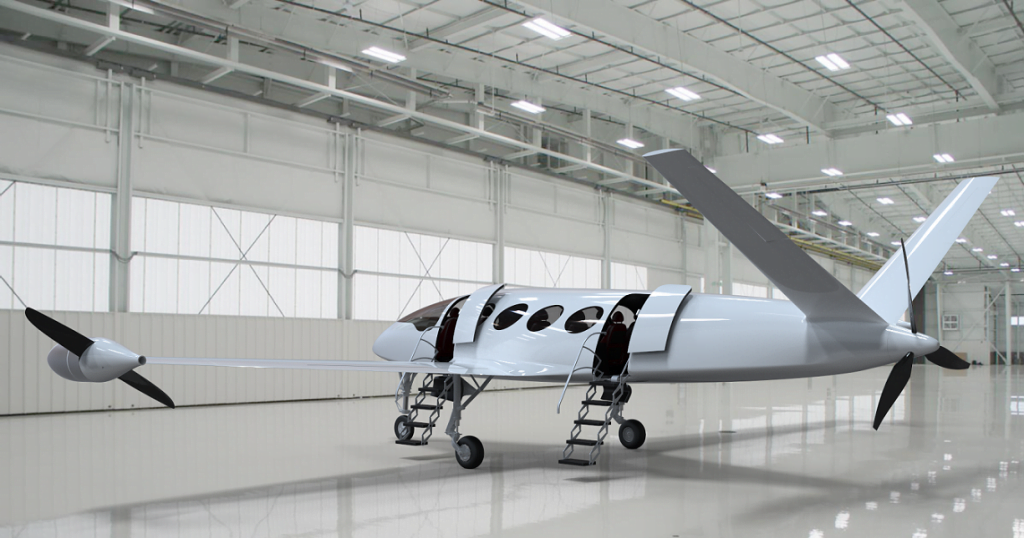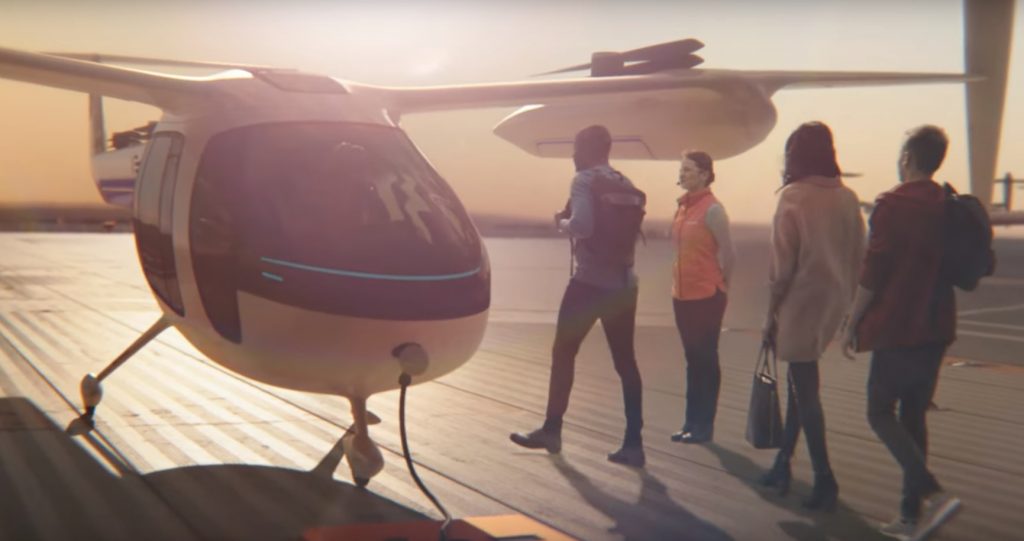Earlier this month, transportation giant Uber and US space agency NASA signed an agreement to partner for the development of concepts and technologies for future, urban travel and transportation in populated areas. In other words, rideshares in the sky.
Under the Space Act partnership, Uber agreed to “share its plans for implementing an urban aviation rideshare network” while NASA is set to use its latest tech “in airspace management computer modeling and simulation to assess the impacts of small aircraft – from delivery drones to passenger aircraft with vertical take-off and landing capability – in crowded environments.”
According to the announcement, which came during the Uber Elevate Summit, the company’s second annual confab on the future of urban air transport, NASA plans to simulate a small passenger-carrying aircraft as it flies through Dallas airspace during peak scheduled air traffic. This is Uber and NASA’s second agreement, coming on the heels of a deal in November last year in which NASA agreed to help develop air traffic management for Uber’s flying-car project, also known as Uber Elevate, or Uber Air.
One Israeli company has already been working on bringing the concept of such aerial travel, just with a more regional focus. An “Uber meets Tesla in the sky.”
The phrase was coined by Omer Bar-Yohay, CEO of Eviation Aircraft, an Israel-based aerospace company that seeks to transform the regional travel industry through an innovative, all-electric, nine-seat aircraft.
The thinking is that while Uber’s plans to combat inner-city traffic congestion with the flying taxi concept is groundbreaking, where does this leave families, entrepreneurs, executives, and others who seek an efficient, cost-effective way of traveling between cities without having to deal with traffic in a busy airport or getting on a large, full aircraft for the short journey? And can this be booked via a smartphone app?
Bar-Yohay says Eviation Aircraft services will make regional trips cheaper than a train ticket and better for the environment. The battery-powered aircraft, dubbed the “Alice,” is currently being built and is expected to begin its service in 2021.
“Uber doesn’t take you 200 miles. They take you 10 miles. They want to take you 10 miles away with an aerial option as well,” Bar-Yohay tells NoCamels, “Uber wants to say, ‘Ok we’re going to build a new breed of helicopters that will be very short range, but will be cheaper so they will make more sense and since we have the data where people go to and from, we can solve the inner city congestion problem or at least give it another layer with some sort of flying tactic.’ This is really nice, but it’s a completely different problem to solve.”
“We are talking about regional transportation,” he adds.
Bar-Yohay says Uber is not a direct competitor and that the two companies have worked together for years, though he declined to go into the details of the cooperation. He says Uber focuses on vertical take-off and landing from any location while an Eviation airplane would only take off from an airport runway. In addition, Bar-Yohay says, Uber faces a number of challenges in airspace management, safety, and regulation which may push back its plan for market readiness.
“When they do [go to market,] we see them as the ‘feeders’ who will bring the city center kind of client out to our aircraft to go the further distances,” he explains.
Last month, Eviation Aircraft was selected as the winner of the transportation category of Fast Company’s 2018 World Changing Ideas Awards, a nod toward the promise of its potential.
Oh, Alice
Eviation’s “Alice,” the company’s first prototype, aims to travel as far as 650 miles (1049 kms), about the distance from New York City to Louisville, Kentucky, while expelling as little energy as possible, he says. The electric commuter aircraft will carry two crew members and nine passengers on-demand, based on their booking through a phone app currently in the works.
As for the aesthetic, Bar-Yohay says “it’s more or less the equivalent of business class in a big aircraft.”
Sign up for our free weekly newsletter
Subscribe
Unlike the Uber flying taxi concept, Eviation’s Alice aircraft will not be a vertical take-off and landing vehicle. Courtesy
Alice uses two pusher propellers at the tips of its wings and one main pusher propeller at its tail. It has a range of 540nm (nanometers) and a cruise speed of 240kt (knots) due to its 940kWh lithium-ion battery, the result of a $1 million deal signed earlier this year with South Korean battery manufacturer Kokam.
Partnerships with other original equipment manufacturers (OEMs) and corporations will be announced in the next three to four months, Bar-Yohay tells NoCamels..
SEE ALSO: Unmanned Flying Vehicle To Become Ambulance Of The Future
The aircraft’s electric power has its pros and cons, Bar-Yohay says.
“This aircraft will be more stable and the cessation of flight will be dramatically nicer than what you would expect from an aircraft that size,” he explains. This is due to a number of factors, some of them built into the design process, and some directly from the electric propulsion system. “Electric propulsion can be controlled far more frequently than standard propulsion meaning we can change the thrust we get from our motors, roughly 400 times per second, which means even when flying a small aircraft in weather, it won’t be as bumpy.”
The cons include the weight of the batteries, the large amount of energy expelled from those batteries, the weight of the aircraft itself, and the potentially longer period it will take to charge. For every 25-30 minutes of charging, the aircraft can be in the air for an hour, he adds.
These issues, says Bar-Yohay, are being addressed as construction of the aircraft is underway.

The ‘Alice’ uses two pusher propellers at the tips of its wings and one main pusher propeller at its tail. Courtesy.
For Bar-Yohay, the most significant aspect about the new transportation concept will be its low-price point, which he says will rival the cost of a train ticket.
“What if you want to fly from Afula to Eilat? Or from Ramat HaGolan to Eilat? What do you do today? You get in a taxi, you go for hours, but most of the time you just jump in your car and drive, that’s it. But if it would cost you $20 to fly from where you want to go, from Mahanaim or from Meggido, which are the two small airstrips, one from Afula and one next to Rosh Pina, and there you can fly to Eilat with very little PSA-style (public service announcement) ground interference. There is a big difference in the experience and because it’s a small aircraft, there’s very low operating costs. All you need is to pay a very, very small amount of money.”
Bar-Yohay says the company is not trying to take away the experience of driving or flying in a large aircraft. “The whole idea here is to give another option,” he says.
Eviation Aircraft has used its own funds to build the aircraft, but it has also collected some money through the Israeli government. While the company doesn’t have any VCs currently around the table, it is fully funded through a handful of private investors to complete its full-scale flying prototype, Bar-Yohay says.
SEE ALSO: David Vs. Goliath? Inside The Gett-Uber Battle Over Mobile Taxicab Services
The first airplane is expected to be rolled out for test flights as early as 2019. Currently, plane parts are being built all over the world, according to Bar-Yohay, including in the US, Israel, Italy, France, and Singapore. The plane’s first clients will be regional operators, Bar-Yohay says, because “they know how to operate airplanes and they know how to charge them.” The next move is to make it available and accessible by demand for the public.
“We want to find the right partners. We want to scale up. We have an optimistic view of the future,” he says.
Related posts

Editors’ & Readers’ Choice: 10 Favorite NoCamels Articles

Forward Facing: What Does The Future Hold For Israeli High-Tech?

Impact Innovation: Israeli Startups That Could Shape Our Future





Facebook comments